Post Date
January,
16
2018
There are just so many different options and configurations out there when it comes to lifting and adding bigger tires to your Jeep. I have a lot of research to do before I finally decide what is right for me and my Jeep. In the meantime a friend of mine sent me some information and a Lift Guide he created.
Thanks KenJeeper!!!
http://www.wranglerforum.com/f202/beginners-guide-to-lifting-your-jk-298665.html
This is just to help with your lift. Some basic questions I see asked a lot on the forum ie. alignment , do I need XX, etc. Ill gladly go over and help choose a kit for your Jk. I am in not a suspension expert but know my way around. If something here is not covered ... Please ask. If I can't answer the question. I will do my best to find the answer for you. Don't be afraid to post here. the question/answer can help somebody in the future. GOOD LUCK !!!!!!
, do I need XX, etc. Ill gladly go over and help choose a kit for your Jk. I am in not a suspension expert but know my way around. If something here is not covered ... Please ask. If I can't answer the question. I will do my best to find the answer for you. Don't be afraid to post here. the question/answer can help somebody in the future. GOOD LUCK !!!!!!
Tourque your bolts: Tourque specs for the jk can be found HEREon Project JK.
Death wobble: It's very important to properly torque your suspension bolts with the jeeps weight fully on the axles/tires. Not doing so can have the bushings in a bind and lead to problems.
ORE's explanation here
Death wobble is extreme. The front axle wanting to rip from the jeep , only stopped by coming to a complete stop. if not fixed can continue to reek havoc on your front end. The front axle is constrained by your upper and lower CA's and track bar. Usually a loose or bad Ca/bushing is not enough to for DW, any other lose or worn component for that matter. Add a bad track bar/track bar bushing or worn mount hole-all bets are off. Please see PlanMan's thread here on DW. Also the sticky on the grade 8 bolt upgrade. DW is serious and can cause a train reaction of broken parts if not fixed. Remember to always fully check
, only stopped by coming to a complete stop. if not fixed can continue to reek havoc on your front end. The front axle is constrained by your upper and lower CA's and track bar. Usually a loose or bad Ca/bushing is not enough to for DW, any other lose or worn component for that matter. Add a bad track bar/track bar bushing or worn mount hole-all bets are off. Please see PlanMan's thread here on DW. Also the sticky on the grade 8 bolt upgrade. DW is serious and can cause a train reaction of broken parts if not fixed. Remember to always fully check torque periodically. Mark your bolts using a paint marker for a visual.
torque periodically. Mark your bolts using a paint marker for a visual.
Flighty/loose steering: If the jeep is lifted without caster correction, you might feel the steering to be flighty. The reason, adding lift height lowers caster. positive caster helps the steering wheels return to center. The stock Jk has around 4* caster and light compared to other vehicles . At 3" if height, you will likely want to adjust for more caster. Some of the cheaper lifts are for a reason. No caster correction is one of them.
. At 3" if height, you will likely want to adjust for more caster. Some of the cheaper lifts are for a reason. No caster correction is one of them.
Some fixes for caster angle
cam bolts (I do not recommend) Control arm drop brackets (AEV/Rancho/RC) Fixed length control arms Adjustable control arms Cut and rotating the C's or a aftermarket housing like Prorock or TF I just learned of folks using off set ball joints for caster. It's all new to me so I can't help you hereSome info on caster here
for caster. It's all new to me so I can't help you hereSome info on caster here
Alignment:
Steering wheel not center You will need to adjust your steering wheel back to center using the draglink. If you have a Procal it can assist in doing so.
wheel back to center using the draglink. If you have a Procal it can assist in doing so.
Toe Should be no change but ideally you want total 1/8 to 1/16 in.
DIY toe check
Camber If camber is out of spec you have bigger problems. Bent axle tube and/or C or possible balljoint issue.
Caster see above. Stock 4.2*
"Do I need control arms? "You have 8 control arms that are not adjustable. Adjustable CA's correct axle angles (pinion/caster and wheel base) Adding height the axles rotates up and in towards center.
base) Adding height the axles rotates up and in towards center.
Aftermarket control arms typically have better joints for less bind and clearanced for bigger tires. Longer control arms will also help the axle not steer itself as the axle articulates. If you look at any pic with a jeep flexing w/ stock CA's. The drooped side will pull in towards the pitch seem.
If lifted say 4", ideally you would benefit with all 8 arms to center the tires in the wells, pinion angle and caster angle.
"Do I need all 8 control arms?" No ... On a budget... Front lowers are commonly used for caster (adj'd longer then stock). Front uppers can be used as well (adj'd shorter then stock). Next I would add rear uppers for pinion angle (especially with a 2 door shorter rear DS)
shorter rear DS)
Another option fixed CA's. One idea is to use fixed lowers and adjustable uppers. Great option and will save some $$$
one big misconception, after market control short/mid arms gain flex or articulation. This is not true. Flex joints/spherical joints/Heims used in aftermarket arms allow increased misalignment. This lets the axles flex easier/bind less.. Not add travel. Travel is ultimately your shock lengths
Rock Krawler mid arm
Teraflex fixed arm
long arms or short arms?
Long arm kits do not add articulation or flex. Long arms correct geometry and reduce operating angle running higher lifts. Issue being ... Unless its a custom install ...You're at the mercy of the manufacturer. Do your homework before choosing a long arm kit.
A good rule of thumb. Unless lifted over 4" of lift, running 12" travel shocks or coil overs, and 40"tires. You do not need a long arm kit.
steering wheel jerks left/right over bumps: This is known as bumpsteer. Bumpsteer is caused when the track bar and drag link angles are too steep, lengths, and geometry are off. As you go over a bump with one tire, the jeep jerks and sometimes will steer itself. Bumpy roads can be scary with a good case of bumpsteer. Bumpsteer is really is not a issue until up around 4", but the fix is a steeringcorrection kit Raising the track bar & flipping the drag link is the ideal way to fix bumpsteer at higher lift heights -returning the geometry back to normal. Some kits do this similar using a drop pitman arm. I do not recommend using a DPA, it actually puts more stress the steering box. lowering the track bar reduces front roll center. one of the other benefits of a raised TB bracket is roll center correction.
Roll center/trackbar brackets adding lift height lowers the jeeps roll center. this can cause poor corner handling/steering. Raising the track bars at their mounting points will return the roll center to stock or higher. also keep the axle better centered during articulation.
oversteer/understeer Raising the rear track bar alone (front remains stock)= A positive roll axis/understeer. a little understeer is a good thing.
Raising the front trackbar alone (rear remains stock)=a negative roll axis/over steer. oversteer can cause handling to be unpredictable. you definitely don't want this.
Most kits in the 2.5+ range will address the rear. Notes:
- A shorter wheel base 2 door, oversteer/understeer will be more pronounced.
- The front track bar can not be raised without flipping the drag link or running a droppitman arm (see steering correction kit)
- track bar drop brackets only purpose is axle positioning or axle center. usually supplied in cheaper kits.
Axles off center laterally: Adding suspension height will shift the axles. Front to the driver side and rear to the passenger side. A adjustable track bar is used to recenter the axle.
I usually recommend the front first. this will add a little rigidity to the front end and firm up the steering. A 2.5' lift will shift the axles maybe 3/8", not enough to be a concern in itself imo.
A rear 'axle side' track bar bracket will center the axle up to around 3" of height. raising the rear track bar will also improve roll handling.
Axles not center in wheel well (wheelbase) to return wheelbase back to stock - or better. All 8adjustable control arms are needed. Lowers push the axles for/aft, uppers set pinion and caster angles.
When do you need driveshaft's? Adding lift height steepens the angles the driveshaft's operate at. Adding longer shocks will allow the axles to droop further. Disconnecting the swaybar links-even more. If the driveshaft doesn't contact the exhaust/crossover pipe the cv will eventually fail.
Some of the Fixes-Exhaust spacers/y-pipes/limit straps or a smaller ID driveshaft. There is no magic number that says you will or will not have issues at xx height, too many variables. So just make a habit of crawling underneath and looking for split boots and spitting grease. When you do decide to swap out driveshafts, adjustable arms are now very important to set proper pinion angles. **note** In some cases, running a taller lift and aftermarket Drive shaft, some will have to give up caster for pinion angle to prevent vibes, or worst case-the TC damage. Best bet here is a aftermarket housingwith 10* separation. Or like mentioned ... Cut and turn the C's
Swaybar end links: most smaller lifts sold, only include longer rears. The stock rears are used in the front. The swaybar itself should be parallel to the ground at ride height +/- a few degrees. If running a longer shock you run the risk of inverting the links and causing damage. Plus drivability will suffer not extending the links. Quick disconnects are obviously another option.
shock lengths: Shock length is your axles downward limiting factor. adding height reduces downtravel running stock length shocks. The stock Rubicon shocks are around 8"in travel iirc. Shock extensions are a inexpensive way to add travel. they work but limit uptravel if the jeep is set up to utilize all of it [travel]. Most shocks list lift ranges ex. 0-2,4-6 etc. but you'll want to choose what works best with your setup.
Bumpstop height: every jeep is set up different. Choose your tires and shock size. Then decide on bumpstop size. Extended bumpstops limit uptravel . this protects the shocks, keeps tires from rubbing the flares, etc.
the shocks, keeps tires from rubbing the flares, etc.
If running a drag link flip, the drag link away from the frame at full stuff. Theres other possible interferences depending on different components, so its important to cycle the suspension [full bump and droop] to determine BS lengths.
Important note on lift height:
The general consensus is 2.5" is "safe" and you don't necessarily need CA's/TB's and all that good stuff. Yes this is true BUT. Aftermarket coils are designed not to sag under heavy weight. Some note that (listed heights are with a fully outfitted jeep). W/O bumpers, a winch, tire carrier, armor etc, it's not uncommon for a 2.5" lift to give you 1" or more in height.
My goal here was to keep this simple. If anybody has any questions, please ask and I will do my best to help. others, don't be afraid to chime in. this discussion is for all.
Edit 11/1/2015
Thanks KenJeeper!!!
This is just to help with your lift. Some basic questions I see asked a lot on the forum ie. alignment
Tourque your bolts: Tourque specs for the jk can be found HEREon Project JK.
Death wobble: It's very important to properly torque your suspension bolts with the jeeps weight fully on the axles/tires. Not doing so can have the bushings in a bind and lead to problems.
ORE's explanation here
Death wobble is extreme. The front axle wanting to rip from the jeep
Flighty/loose steering: If the jeep is lifted without caster correction, you might feel the steering to be flighty. The reason, adding lift height lowers caster. positive caster helps the steering wheels return to center. The stock Jk has around 4* caster and light compared to other vehicles
Some fixes for caster angle
cam bolts (I do not recommend) Control arm drop brackets (AEV/Rancho/RC) Fixed length control arms Adjustable control arms Cut and rotating the C's or a aftermarket housing like Prorock or TF I just learned of folks using off set ball joints
Alignment:
Steering wheel not center You will need to adjust your steering
Toe Should be no change but ideally you want total 1/8 to 1/16 in.
DIY toe check
Camber If camber is out of spec you have bigger problems. Bent axle tube and/or C or possible balljoint issue.
Caster see above. Stock 4.2*
"Do I need control arms? "You have 8 control arms that are not adjustable. Adjustable CA's correct axle angles (pinion/caster and wheel
Aftermarket control arms typically have better joints for less bind and clearanced for bigger tires. Longer control arms will also help the axle not steer itself as the axle articulates. If you look at any pic with a jeep flexing w/ stock CA's. The drooped side will pull in towards the pitch seem.
If lifted say 4", ideally you would benefit with all 8 arms to center the tires in the wells, pinion angle and caster angle.
"Do I need all 8 control arms?" No ... On a budget... Front lowers are commonly used for caster (adj'd longer then stock). Front uppers can be used as well (adj'd shorter then stock). Next I would add rear uppers for pinion angle (especially with a 2 door
Another option fixed CA's. One idea is to use fixed lowers and adjustable uppers. Great option and will save some $$$
one big misconception, after market control short/mid arms gain flex or articulation. This is not true. Flex joints/spherical joints/Heims used in aftermarket arms allow increased misalignment. This lets the axles flex easier/bind less.. Not add travel. Travel is ultimately your shock lengths
Rock Krawler mid arm
Teraflex fixed arm
long arms or short arms?
Long arm kits do not add articulation or flex. Long arms correct geometry and reduce operating angle running higher lifts. Issue being ... Unless its a custom install ...You're at the mercy of the manufacturer. Do your homework before choosing a long arm kit.
A good rule of thumb. Unless lifted over 4" of lift, running 12" travel shocks or coil overs, and 40"tires. You do not need a long arm kit.
steering wheel jerks left/right over bumps: This is known as bumpsteer. Bumpsteer is caused when the track bar and drag link angles are too steep, lengths, and geometry are off. As you go over a bump with one tire, the jeep jerks and sometimes will steer itself. Bumpy roads can be scary with a good case of bumpsteer. Bumpsteer is really is not a issue until up around 4", but the fix is a steeringcorrection kit Raising the track bar & flipping the drag link is the ideal way to fix bumpsteer at higher lift heights -returning the geometry back to normal. Some kits do this similar using a drop pitman arm. I do not recommend using a DPA, it actually puts more stress the steering box. lowering the track bar reduces front roll center. one of the other benefits of a raised TB bracket is roll center correction.
Roll center/trackbar brackets adding lift height lowers the jeeps roll center. this can cause poor corner handling/steering. Raising the track bars at their mounting points will return the roll center to stock or higher. also keep the axle better centered during articulation.
oversteer/understeer Raising the rear track bar alone (front remains stock)= A positive roll axis/understeer. a little understeer is a good thing.
Raising the front trackbar alone (rear remains stock)=a negative roll axis/over steer. oversteer can cause handling to be unpredictable. you definitely don't want this.
Most kits in the 2.5+ range will address the rear. Notes:
- A shorter wheel base 2 door, oversteer/understeer will be more pronounced.
- The front track bar can not be raised without flipping the drag link or running a droppitman arm (see steering correction kit)
- track bar drop brackets only purpose is axle positioning or axle center. usually supplied in cheaper kits.
Axles off center laterally: Adding suspension height will shift the axles. Front to the driver side and rear to the passenger side. A adjustable track bar is used to recenter the axle.
I usually recommend the front first. this will add a little rigidity to the front end and firm up the steering. A 2.5' lift will shift the axles maybe 3/8", not enough to be a concern in itself imo.
A rear 'axle side' track bar bracket will center the axle up to around 3" of height. raising the rear track bar will also improve roll handling.
Axles not center in wheel well (wheelbase) to return wheelbase back to stock - or better. All 8adjustable control arms are needed. Lowers push the axles for/aft, uppers set pinion and caster angles.
When do you need driveshaft's? Adding lift height steepens the angles the driveshaft's operate at. Adding longer shocks will allow the axles to droop further. Disconnecting the swaybar links-even more. If the driveshaft doesn't contact the exhaust/crossover pipe the cv will eventually fail.
Some of the Fixes-Exhaust spacers/y-pipes/limit straps or a smaller ID driveshaft. There is no magic number that says you will or will not have issues at xx height, too many variables. So just make a habit of crawling underneath and looking for split boots and spitting grease. When you do decide to swap out driveshafts, adjustable arms are now very important to set proper pinion angles. **note** In some cases, running a taller lift and aftermarket Drive shaft, some will have to give up caster for pinion angle to prevent vibes, or worst case-the TC damage. Best bet here is a aftermarket housingwith 10* separation. Or like mentioned ... Cut and turn the C's
Swaybar end links: most smaller lifts sold, only include longer rears. The stock rears are used in the front. The swaybar itself should be parallel to the ground at ride height +/- a few degrees. If running a longer shock you run the risk of inverting the links and causing damage. Plus drivability will suffer not extending the links. Quick disconnects are obviously another option.
shock lengths: Shock length is your axles downward limiting factor. adding height reduces downtravel running stock length shocks. The stock Rubicon shocks are around 8"in travel iirc. Shock extensions are a inexpensive way to add travel. they work but limit uptravel if the jeep is set up to utilize all of it [travel]. Most shocks list lift ranges ex. 0-2,4-6 etc. but you'll want to choose what works best with your setup.
Bumpstop height: every jeep is set up different. Choose your tires and shock size. Then decide on bumpstop size. Extended bumpstops limit uptravel . this protects
If running a drag link flip, the drag link away from the frame at full stuff. Theres other possible interferences depending on different components, so its important to cycle the suspension [full bump and droop] to determine BS lengths.
Important note on lift height:
The general consensus is 2.5" is "safe" and you don't necessarily need CA's/TB's and all that good stuff. Yes this is true BUT. Aftermarket coils are designed not to sag under heavy weight. Some note that (listed heights are with a fully outfitted jeep). W/O bumpers, a winch, tire carrier, armor etc, it's not uncommon for a 2.5" lift to give you 1" or more in height.
My goal here was to keep this simple. If anybody has any questions, please ask and I will do my best to help. others, don't be afraid to chime in. this discussion is for all.
Edit 11/1/2015
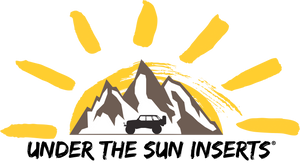
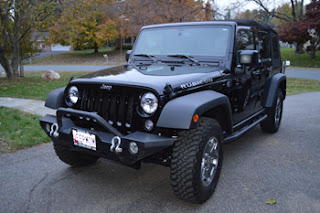

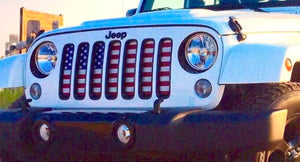
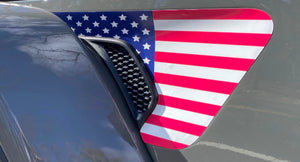
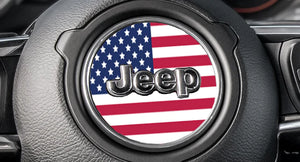
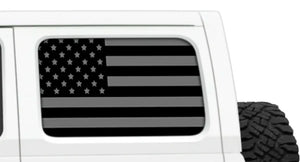
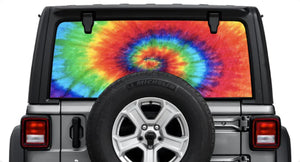
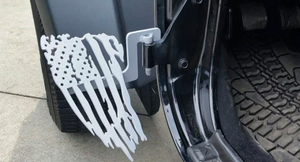
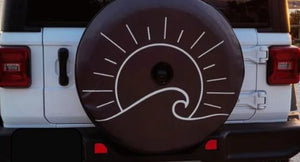
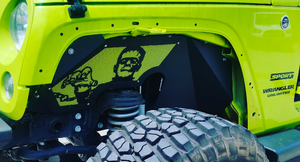
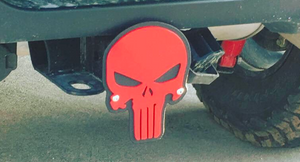
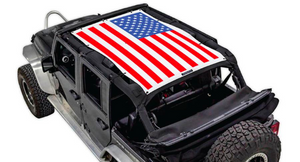
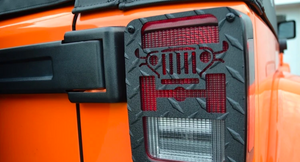
this was very amazing discount code and delivery much better experience visit at the gosphero discount code